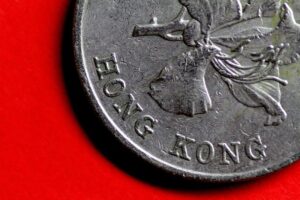Hong Kong Dollar: A Currency Peg Under Pressure
In recent weeks, the stability of the Hong Kong dollar has come under scrutiny, as U.S. President Donald Trump’s fluctuating policies impact currency markets worldwide. The peg that has anchored the Hong Kong dollar for over four decades is facing its most significant test. The currency has shifted dramatically within its trading band against the U.S. dollar—a stark reminder that even time-honored structures can experience turbulence.
Volatility and Interest Rates: A Challenging Environment
The recent volatility in the Hong Kong dollar does not pose an immediate threat to the peg, which has successfully endured for decades. However, this instability is reshaping the financial landscape, particularly through its influence on interest rates. The synchronized movements of interest rates between Hong Kong and the United States are beginning to diverge as capital flows into Hong Kong, driven by impressive share offerings and a surge in Chinese investment. Concurrently, investor sentiment toward U.S. assets has soured due to concerns about increasing debt.
As capital floods into Hong Kong, dynamics shift. Renowned economist Raymond Yeung from ANZ noted, "The pace and speed of inflow was quite surprising." This influx has prompted the Hong Kong Monetary Authority (HKMA) to intervene in the foreign exchange market multiple times, marking a crucial shift in monetary policy.
Short-Selling and Record Low Borrowing Costs
As borrowing costs plummeted to historically low levels, speculators have taken notice. The lure of low interest rates has led to increased short-selling activities in the currency market, pushing the Hong Kong dollar to the lower threshold of its peg at 7.85. Furthermore, the widening gap between U.S. three-month rates and Hong Kong benchmark rates has reached unprecedented levels, indicating a growing disconnect that could spell trouble for businesses and investors.
Analysts caution that while occasional fluctuations in the rate between the Hong Kong dollar and the U.S. dollar are typical, the severe movements experienced recently are disrupting financial stability. Yeung warns, "If the gap closes abruptly, firms and households may face an interest rate shock, jeopardizing overall financial health in Hong Kong."
Ensuring Long-Term Stability Amid Uncertainty
In light of these complexities, Hong Kong officials are committed to maintaining the currency peg. Chief Executive John Lee has reassured stakeholders that the peg is not only intact but essential for financial stability. Additionally, HKMA’s Eddie Yue emphasized that while lower interest rates affect individuals and corporates differently, the macroeconomic benefits could be significant.
"Lower interest rates should be beneficial to the current economic environment of Hong Kong," Yue stated. Echoing these sentiments, the city’s property market has shown signs of recovery, with home prices rebounding after several months of decline, bolstered by decreased mortgage rates.
The government is also seizing the opportunity to tap into affordable funding, having issued 30-year bonds for the first time—an essential step for long-term financial planning. Lei Zhu, from Fidelity International, remarked, "It’s a good time for Hong Kong to lock in low funding."
Conclusion
As the landscape continues to evolve, the Hong Kong dollar remains a focal point in global finance. The interplay of U.S. policy, market sentiment, and local economic conditions will undoubtably continue to shape its trajectory. Investors and businesses alike must navigate this complexity with strategic foresight while being attuned to the potential opportunities arising from the current low-rate environment.
Stay tuned with Extreme Investor Network for the latest insights and expert analysis on currency trends and investment strategies.

